From the days of Benjamin Franklin’s appointment as the first Postmaster General in 1775 to the present, postal workers have played a critical role in the delivery of mail, adapting to societal and technological changes over the years. As the world evolved, so too did the tools and uniforms of postal workers, making it fascinating to reflect on how the profession has transformed over time. Through vintage photographs, we are granted a rare opportunity to witness this evolution firsthand. These images serve as snapshots of the dedication, innovation, and endurance of postal workers, who have embraced diverse modes of transport—from horse-drawn carriages to modern-day bicycles, trucks, and mail wheelbarrows.
The Origins of Postal Service and Early Postal Workers
The U.S. Postal Service’s origins date back to 1775 when Benjamin Franklin was appointed Postmaster General, an era that laid the foundation for what would become one of the most efficient postal systems in the world. Early postal workers played an essential role in the operation of the postal network, often utilizing rudimentary methods of transportation to deliver mail across the country.
These early workers faced long, arduous journeys, and photographs from the late 1800s reflect their resilience and dedication to the job. The early days of postal service were defined by the challenges of delivering letters across vast distances, with horseback being the primary means of transportation.
Video
Watch the video to learn about the 50th anniversary of The Great Postal Strike! Don’t miss this look back at a pivotal moment in postal history.
Horse-Drawn Carriages and the Expansion of the Postal System (1900s)
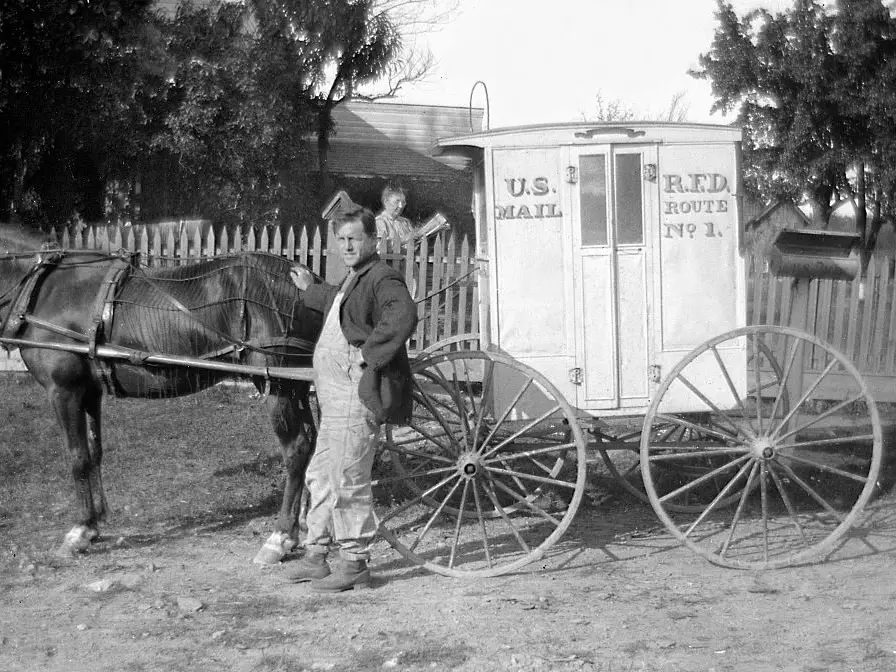
At the turn of the century, the introduction of horse-drawn carriages for mail delivery marked a significant step forward in the efficiency of the postal system. These carriages were designed to carry larger quantities of mail across city streets, replacing the previous method of hand-delivery by foot. Vintage photographs from the early 1900s showcase postal workers in overalls and caps, navigating city streets while pulling heavy carts loaded with mail. The photographs also feature the advent of winter sleds and sleighs, used to continue service during snowy conditions.
Pneumatic Mail Tubes: Revolutionizing Mail Transportation (1893)
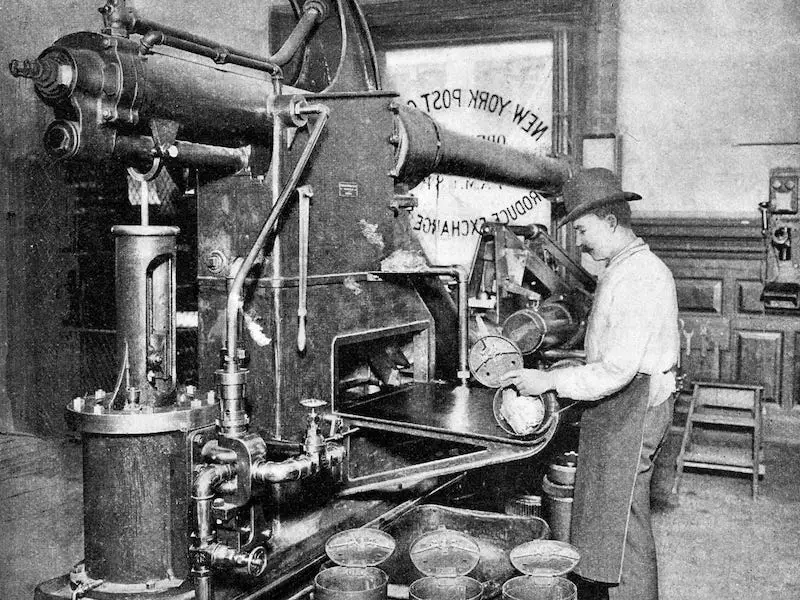
One of the most innovative technologies introduced to postal service during this time was pneumatic mail tubes. First used in Philadelphia in 1893, these tubes revolutionized the speed at which mail could be transferred between post offices. The pneumatic system allowed large canisters to carry up to 600 letters in one go, dramatically improving the efficiency of mail delivery in busy cities. These tubes were a technological marvel of the late 19th century, and vintage images from this time depict the installation of these systems, offering a glimpse into the futuristic nature of early mail transportation.
The Rise of Motorized Vehicles and the Transition to Modern Delivery (1910-1920s)
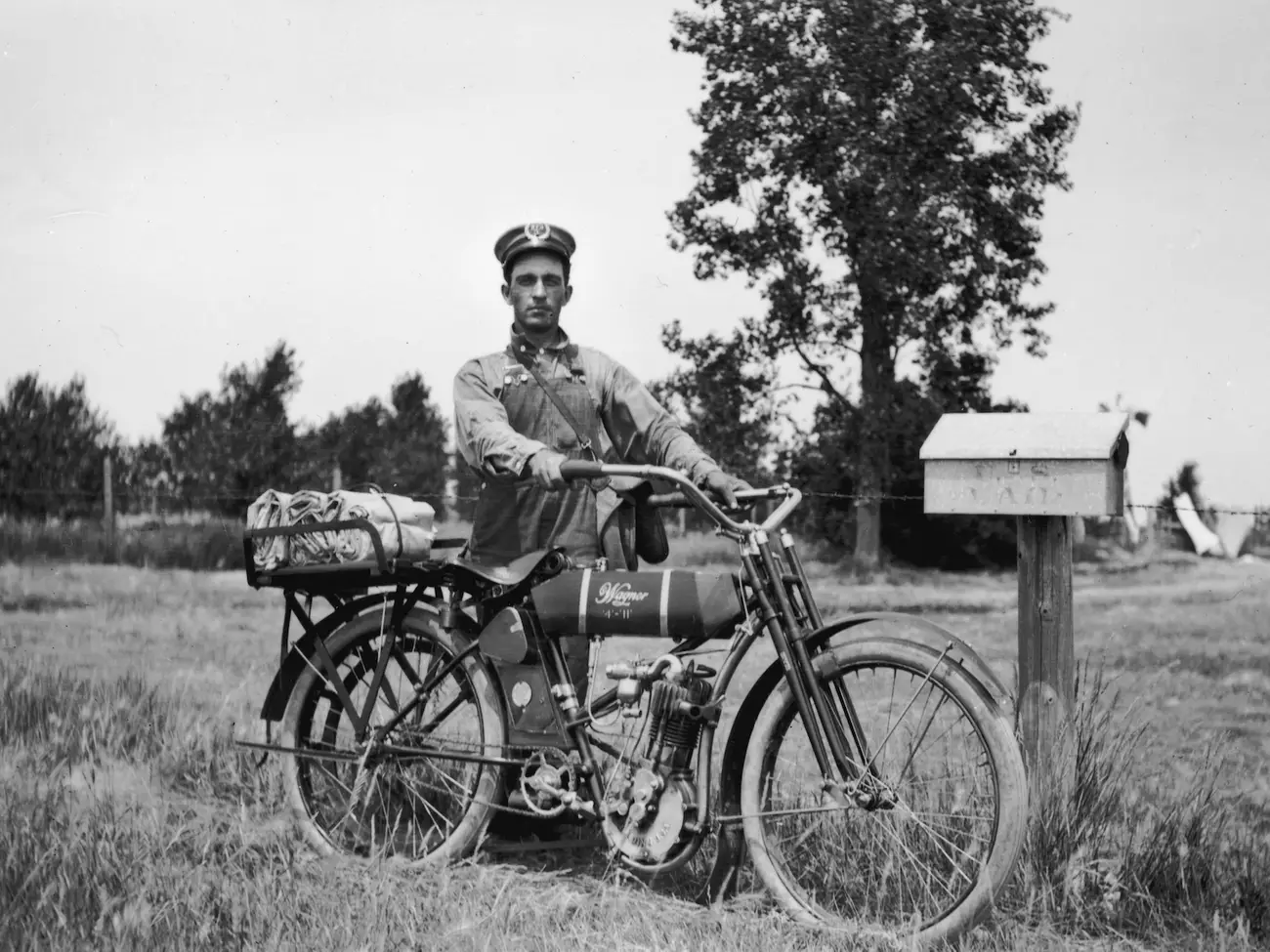
By the early 1900s, motor vehicles began replacing horse-drawn carriages as postal workers’ primary means of transportation. The introduction of cars, trucks, and motorcycles significantly reduced the time it took to deliver mail across towns and cities. The 1910s and 1920s marked a new era of delivery, as evidenced by photographs of postal workers riding motorcycles, utilizing electric vehicles, and later, the introduction of parcel post trucks in 1913, which became a huge success. These trucks were able to carry far more packages, allowing the postal service to keep up with the increasing demand for parcel delivery.
Post-War Innovation: Uniforms and New Delivery Methods (1940s-1950s)
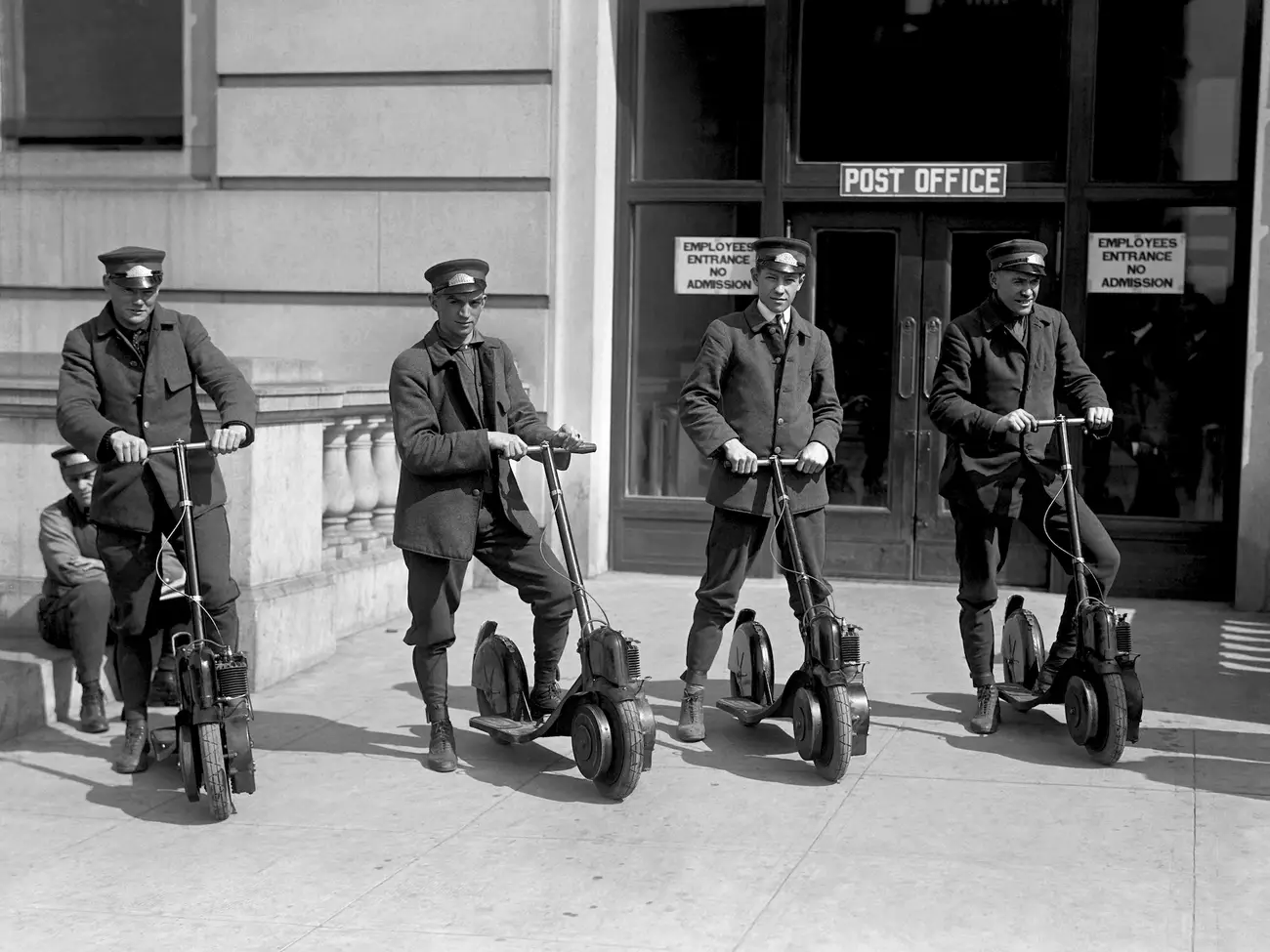
The post-war era saw further innovations in both postal delivery methods and worker uniforms. By the 1940s, mail carriers were wearing specialized uniforms, complete with hats, jackets, and gloves to accommodate both summer and winter conditions. With the advent of motorcycles for rural deliveries, postal workers became increasingly mobile, carrying out their duties in more efficient ways. A shift toward more casual attire began to emerge in the 1950s and beyond, with postal workers wearing short-sleeved shirts and comfortable pants, as shown in the photographs from this period. This era also saw the rise of film and television portrayals of postal workers, solidifying their place in popular culture.
Women Enter the Workforce: Postal Service During WWII (1940s)
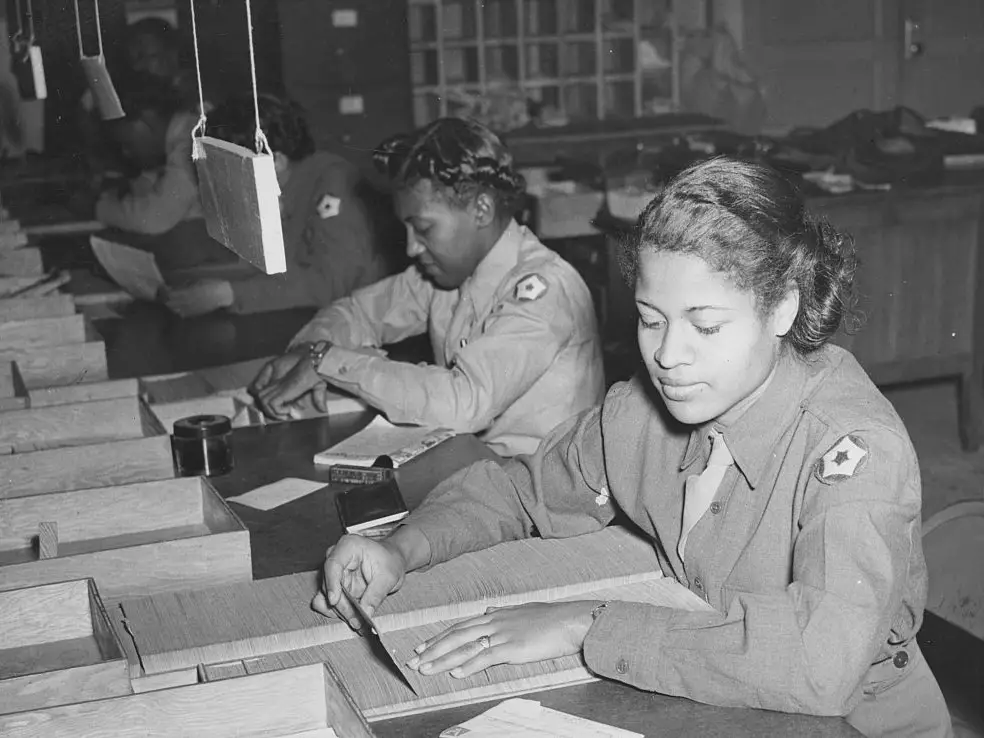
The 1940s brought significant change to the workforce, with women joining the ranks of postal workers during World War II. As men went off to war, women filled vital roles in the postal service, working on sorting and delivering mail both domestically and overseas. Photographs from this period show female postal workers dressed in uniforms, including the Women’s Army Corps, contributing to the war effort. Many of these women worked tirelessly, ensuring that letters and packages reached soldiers and families, despite the challenges of the wartime environment.
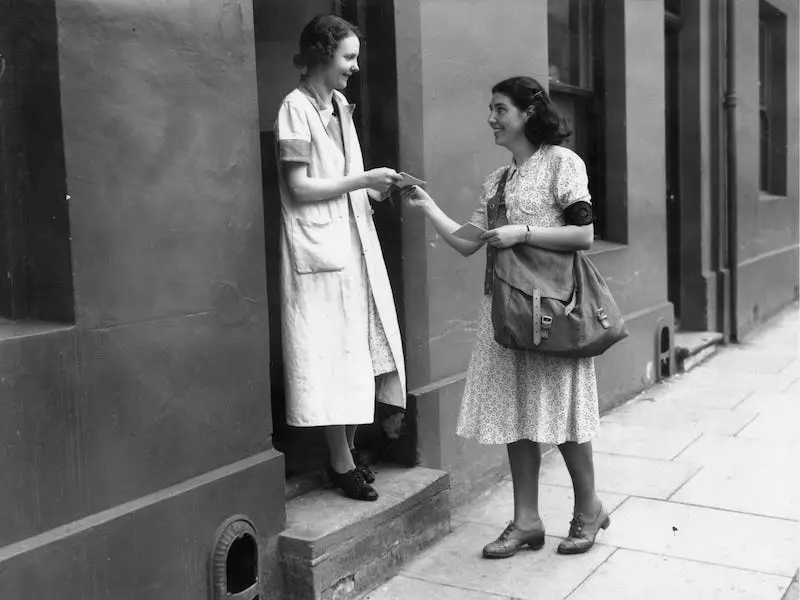
The Changing Postal Worker Uniforms: From Suits to Polo Shirts (1960s-1980s)
Over the decades, postal worker uniforms evolved, reflecting changing tastes, convenience, and practicality. By the 1960s, the formal suits and collared shirts that had once been the standard began to give way to more comfortable attire.
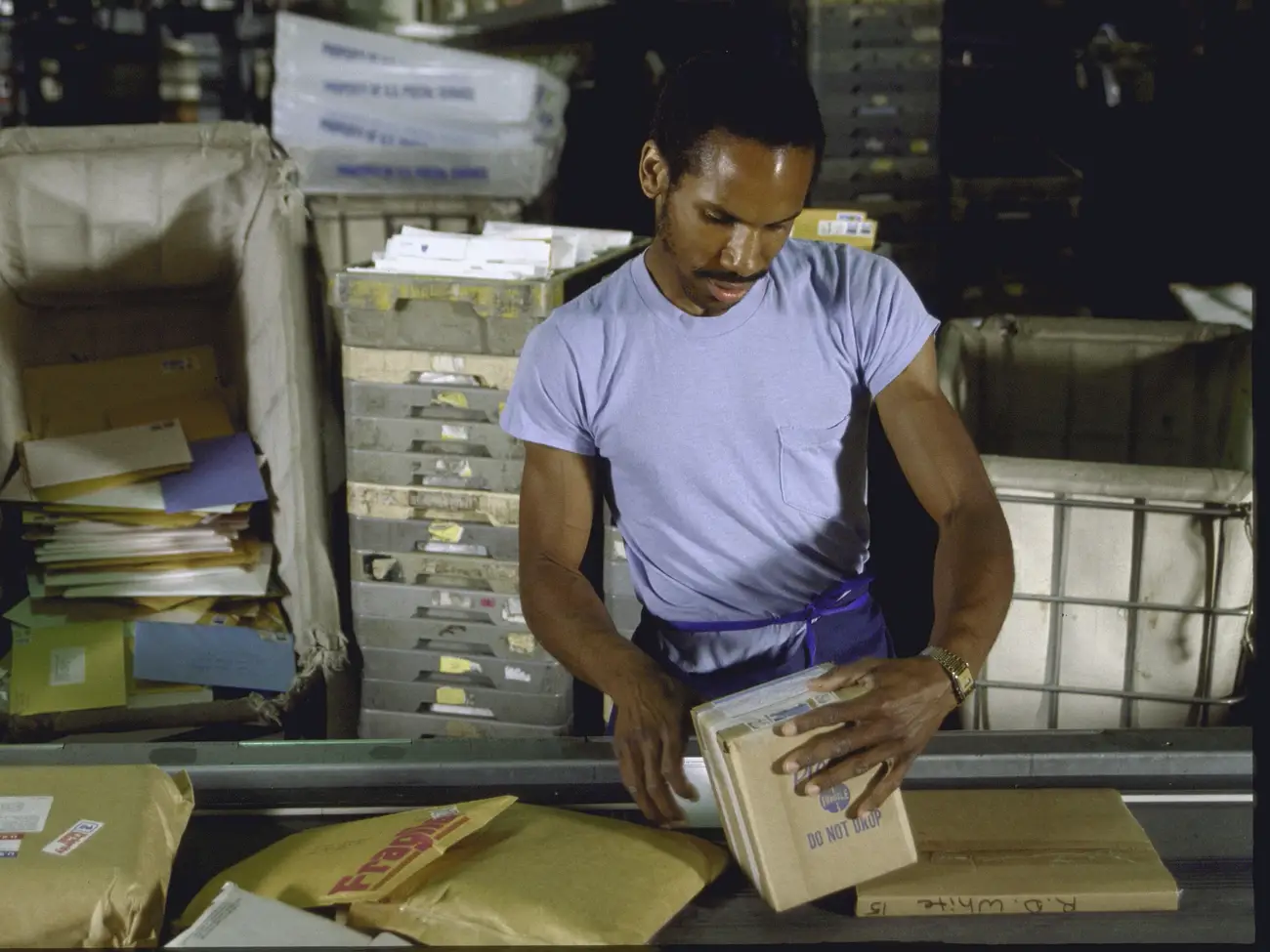
The 1980s saw postal workers wearing polo shirts and shorts, especially in warmer climates. These changes in uniform mirrored a broader cultural shift, as the demands of the job became more focused on mobility and efficiency rather than maintaining a formal appearance. Photographs from this period highlight the relaxed, yet professional nature of postal service attire, as well as the continued dedication of postal workers to ensuring timely delivery.
Technological Advancements and the Integration of Mail Wheelbarrows (1980s-Present)
The 1980s saw further technological advancements, with the introduction of mail wheelbarrows used for sorting and delivering mail more efficiently. This new tool allowed postal workers to carry large quantities of mail across various terrains, from urban streets to rural areas. Photographs from the 1980s show postal workers maneuvering wheelbarrows in all kinds of weather, emphasizing their resilience and resourcefulness in adapting to modern technology. As the role of postal workers continued to evolve, these advancements helped ensure that the Postal Service could meet the growing demands of the public.
The Digital Age and the Future of Postal Workers (1990s-2000s)
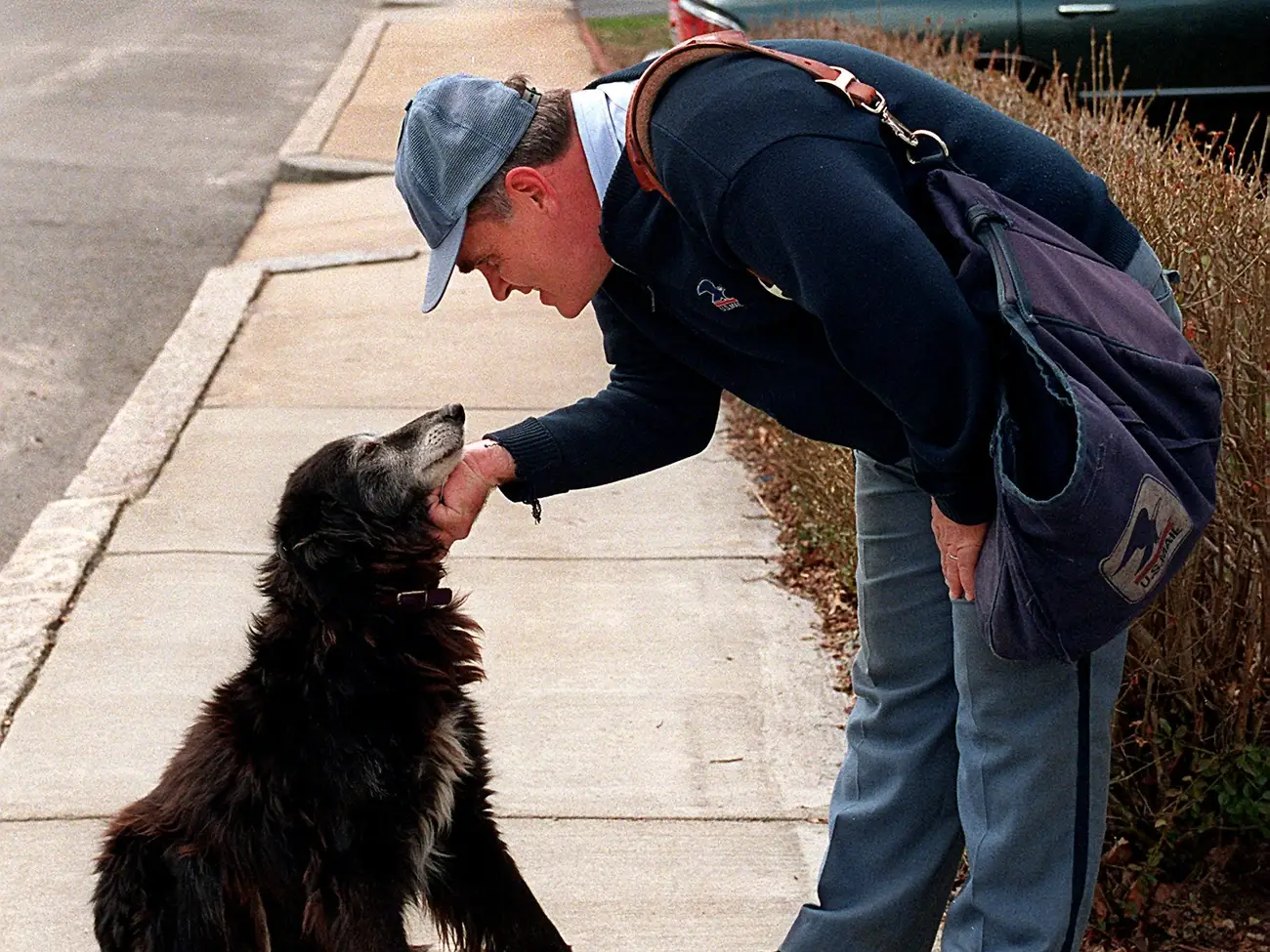
As we entered the digital age, the role of postal workers began to change once again. While email and online communication reduced the volume of physical mail, the need for package delivery grew exponentially. The 1990s and 2000s saw postal workers focusing more on package delivery than ever before, with online shopping and e-commerce becoming increasingly popular. Photographs from the era show postal workers adapting to new technologies, using handheld scanners and other tools to track and manage deliveries.
Gallery: Vintage Photos of Postal Workers Through the Ages
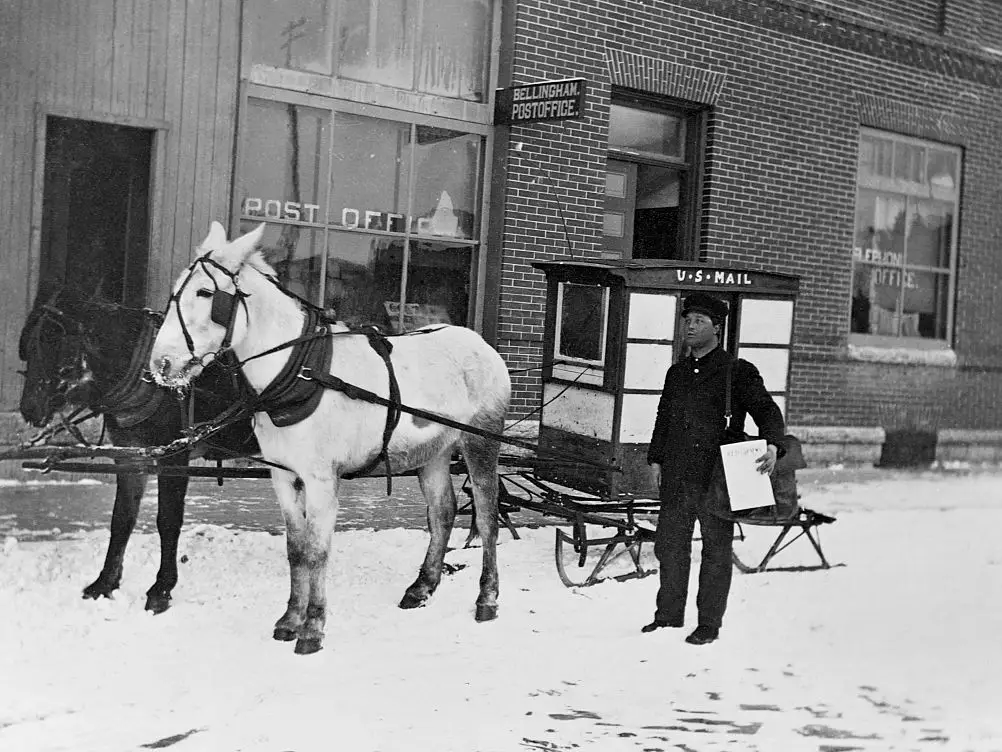
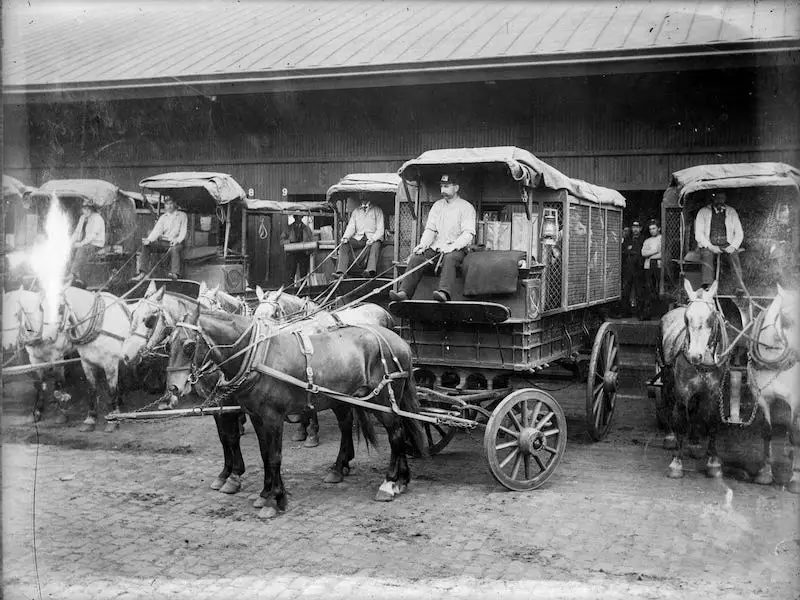
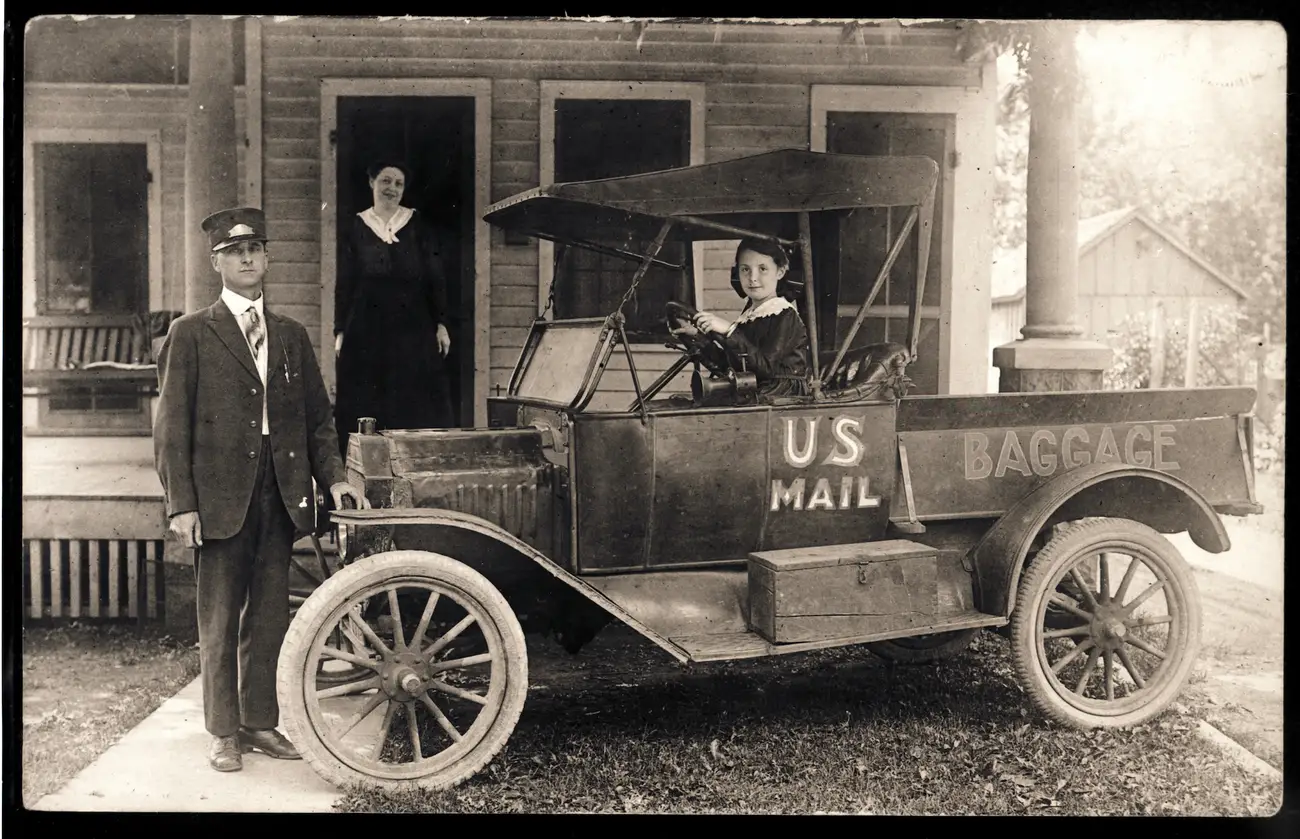
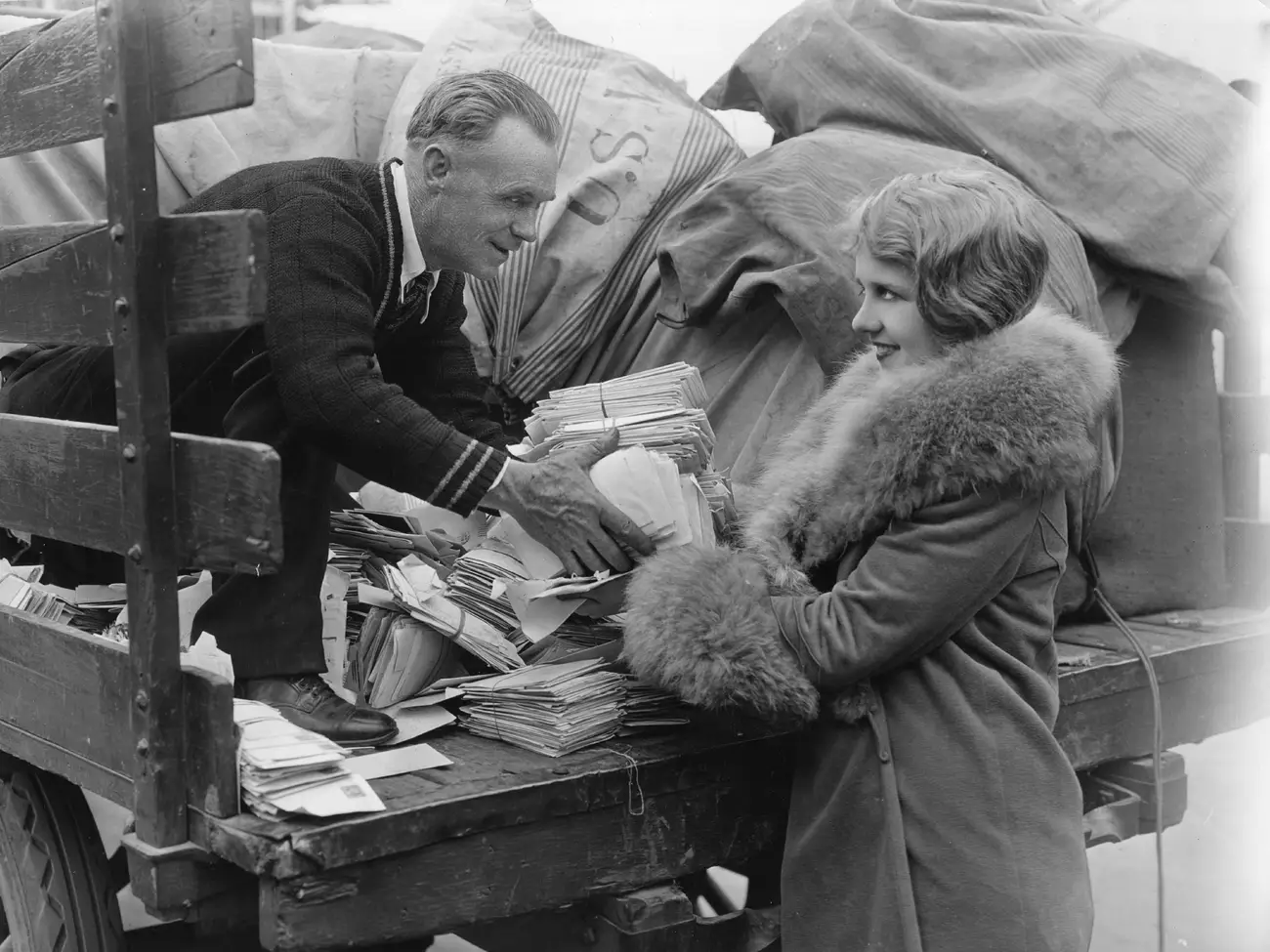
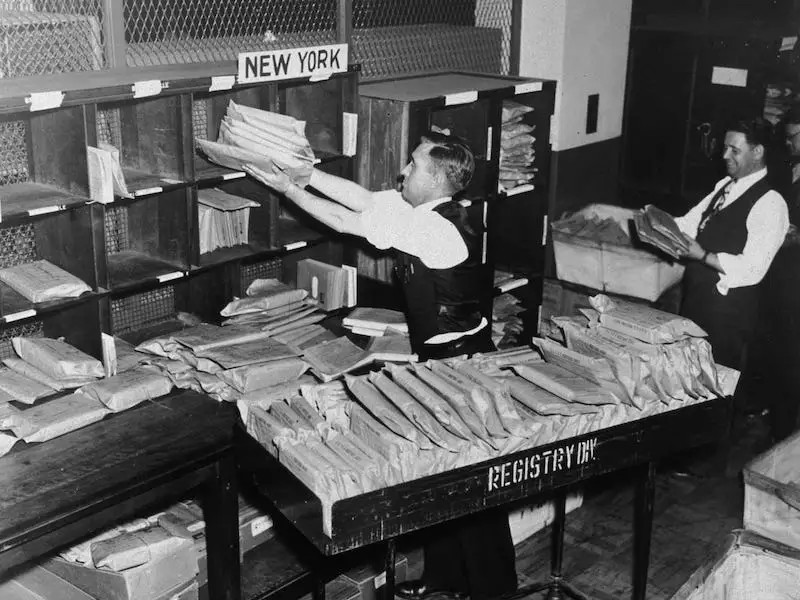
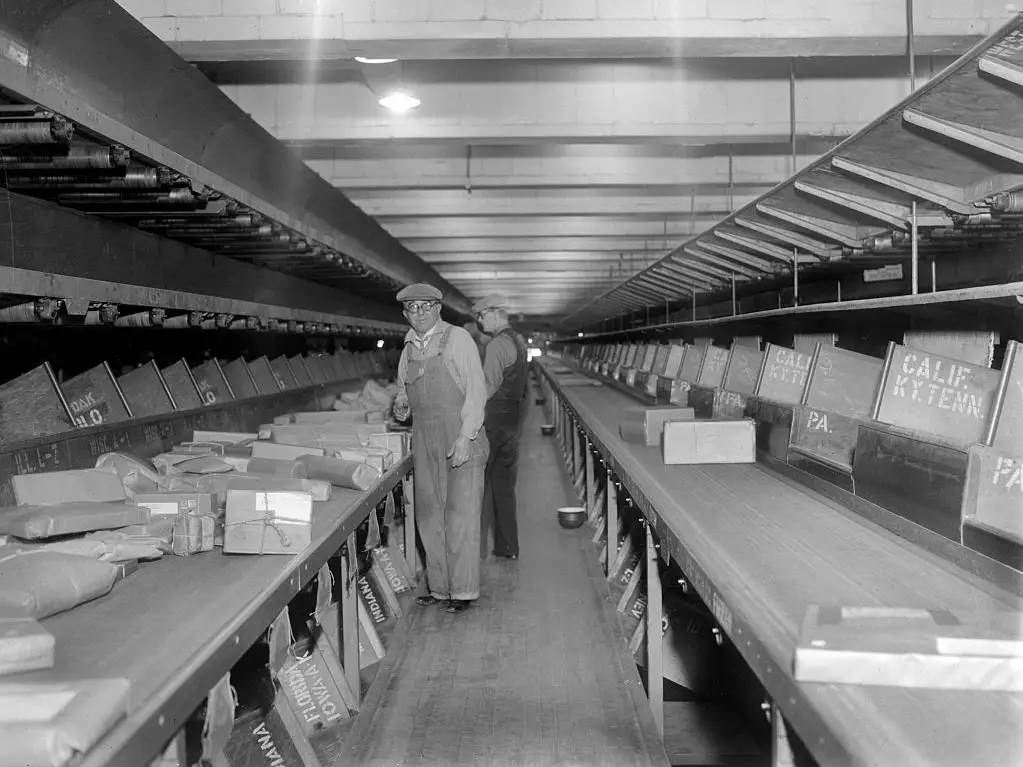
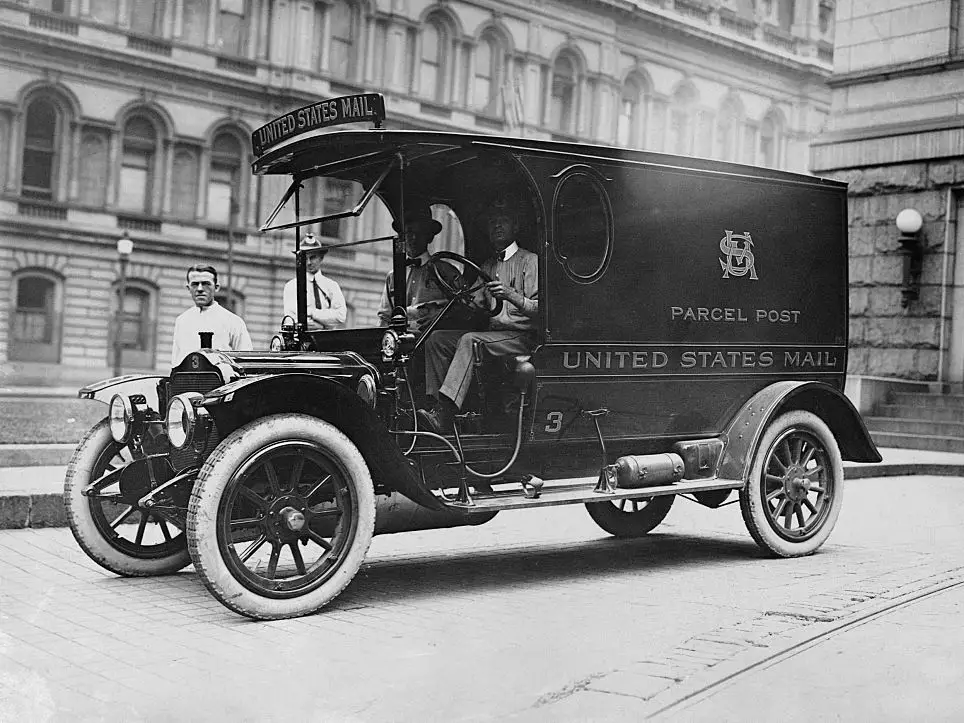
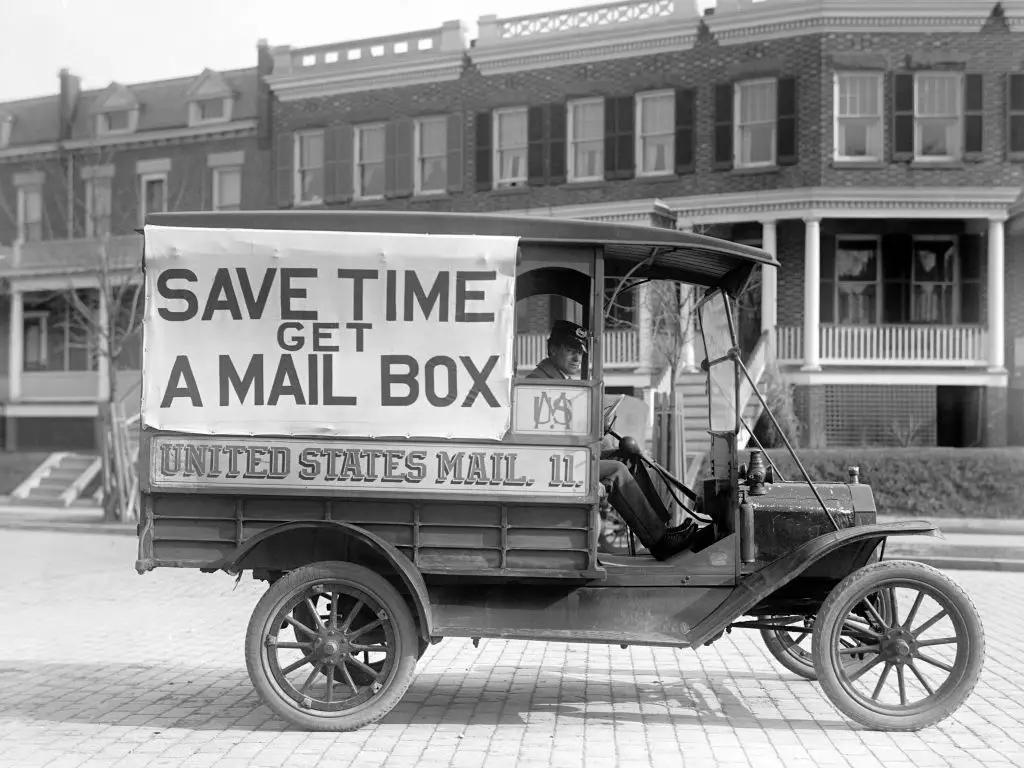
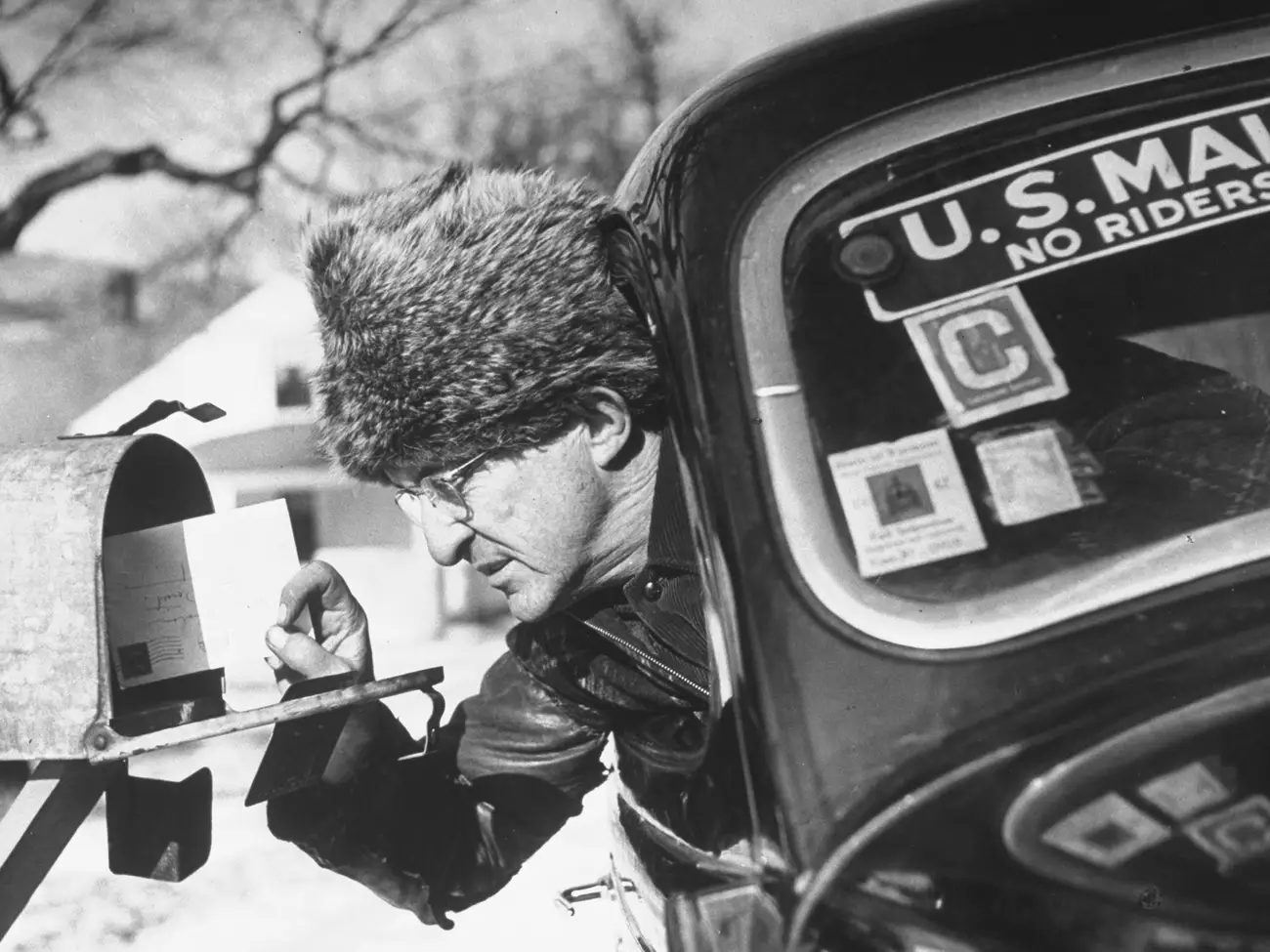
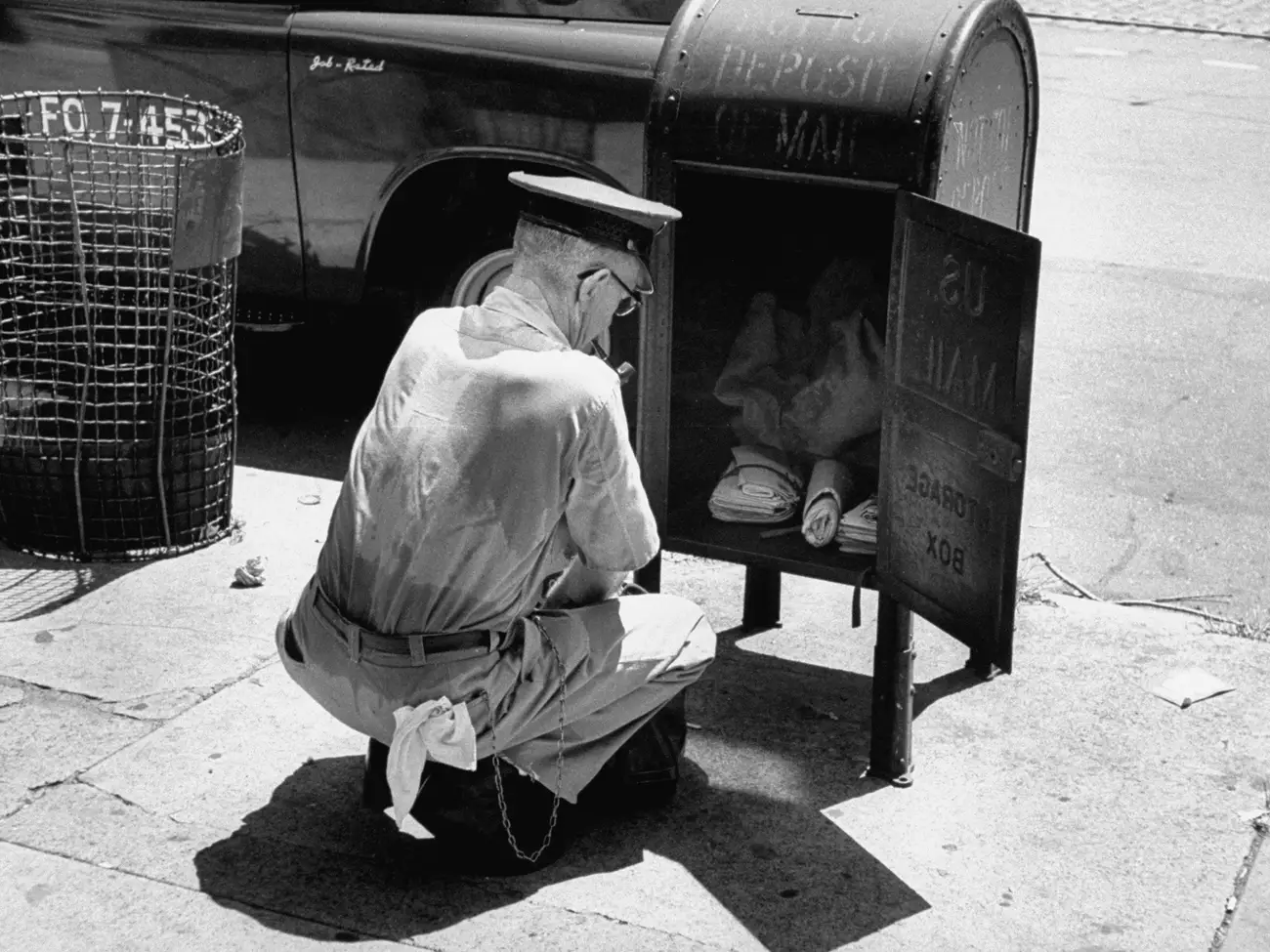
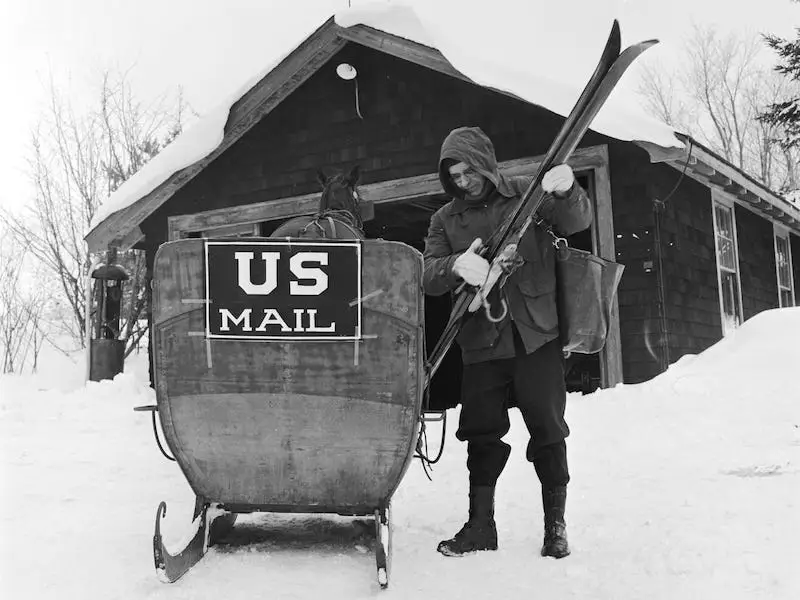
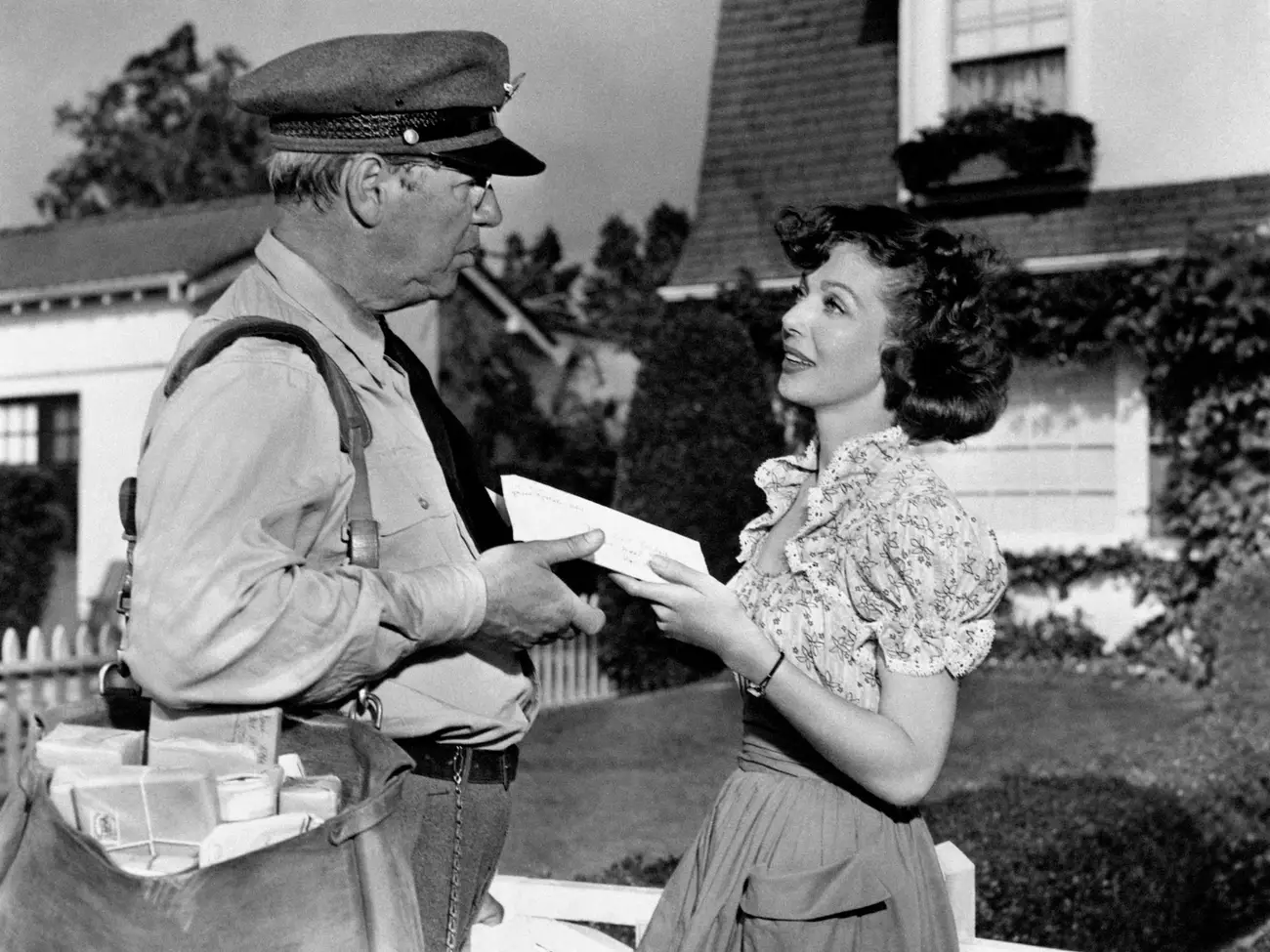

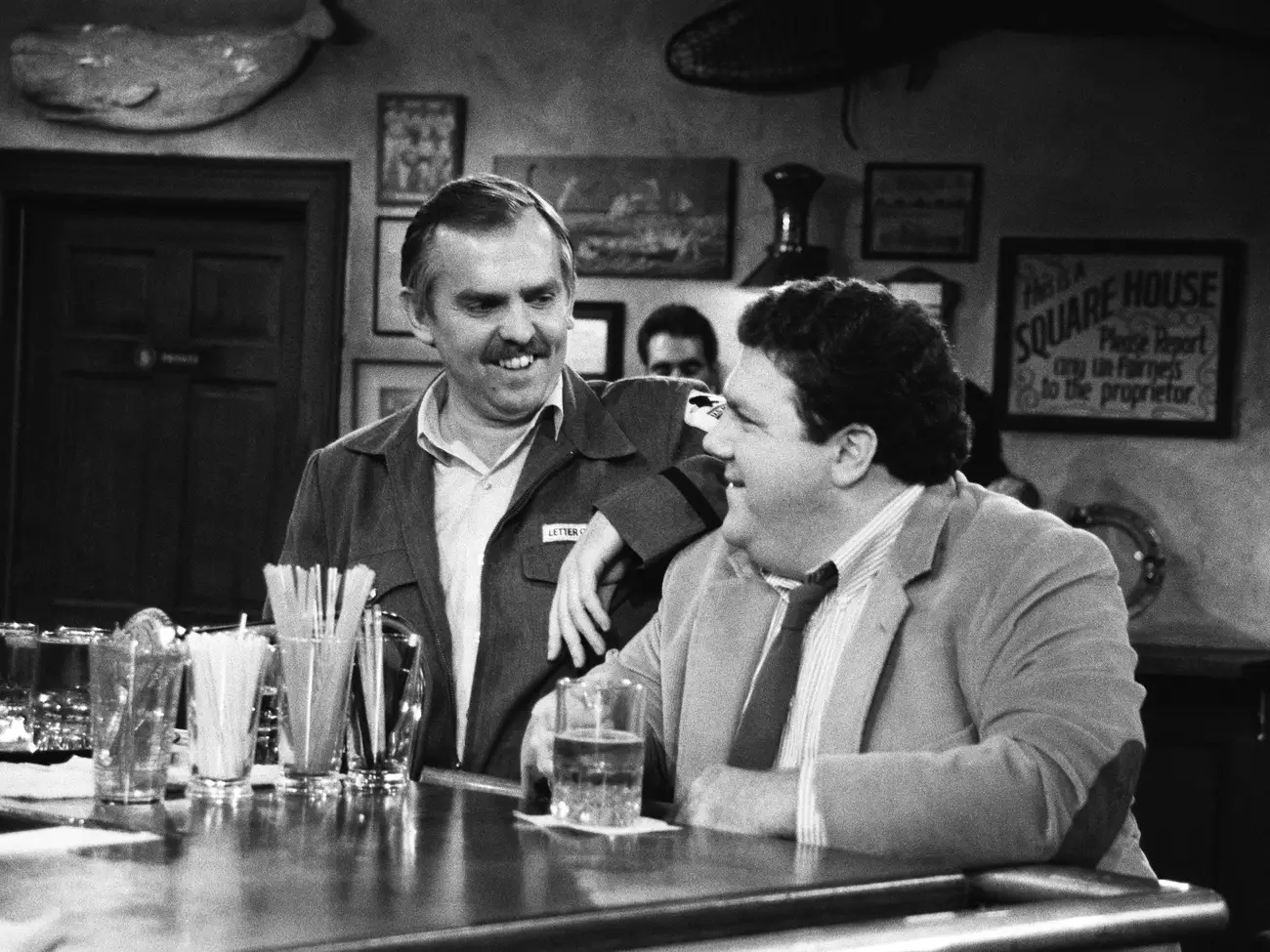
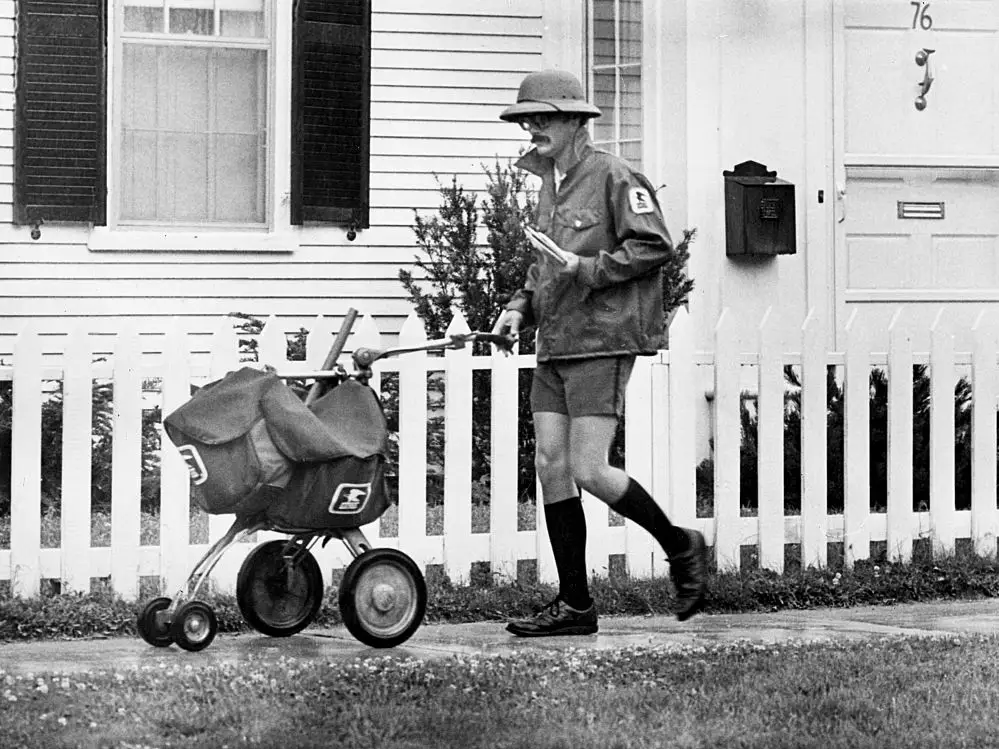
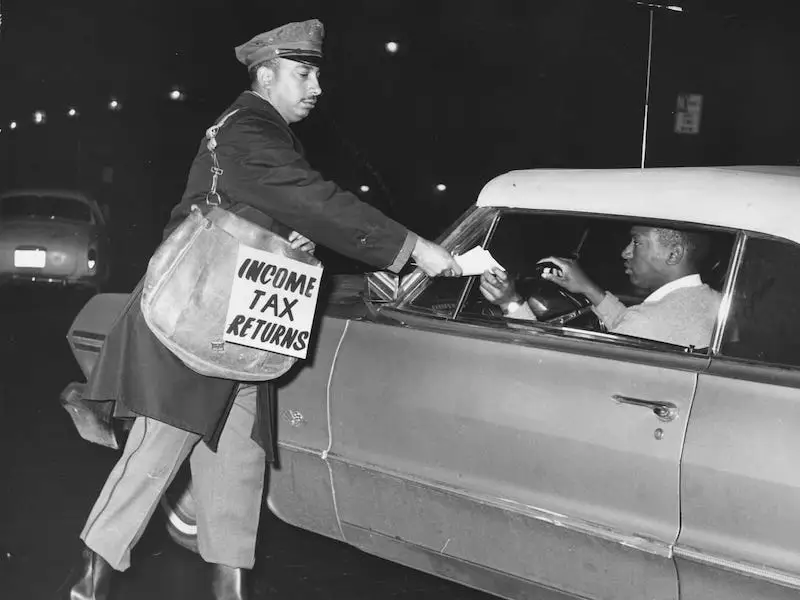
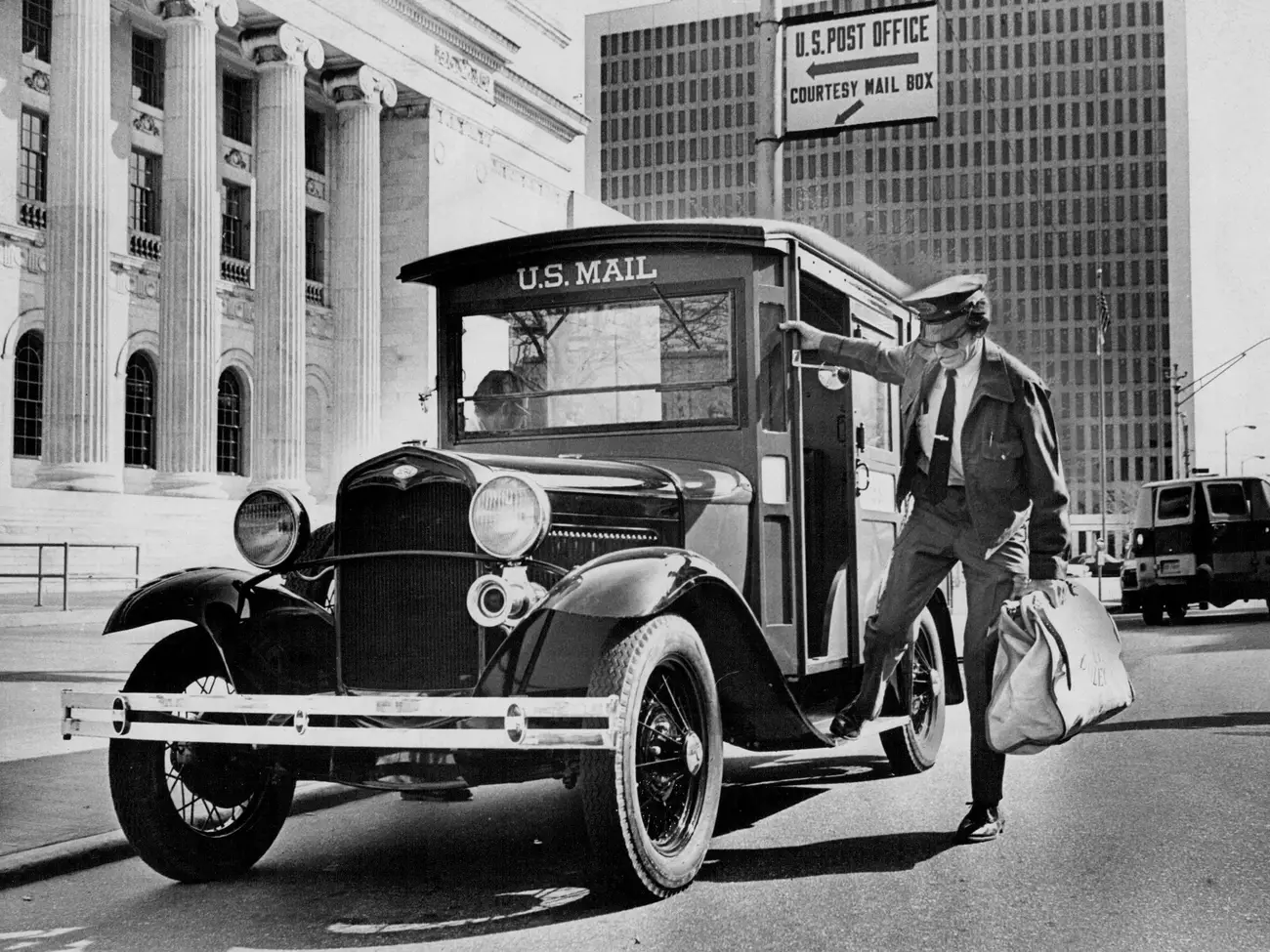
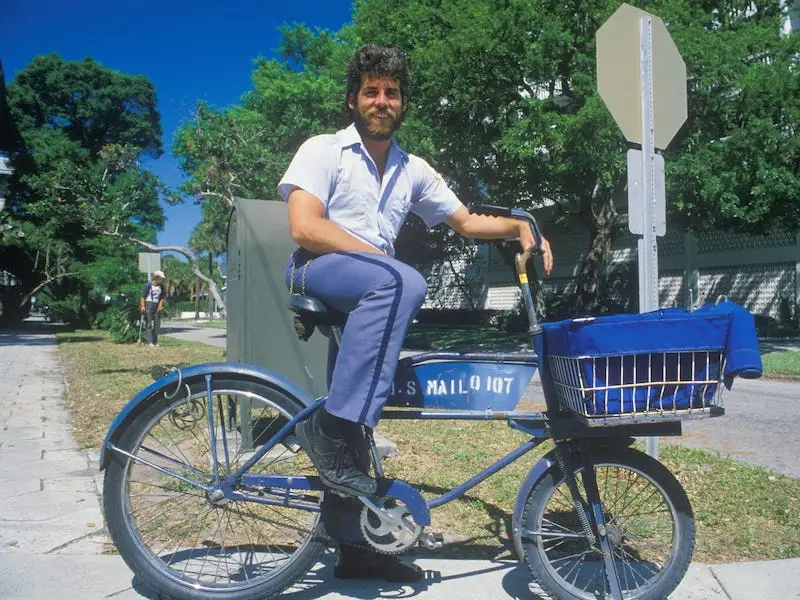
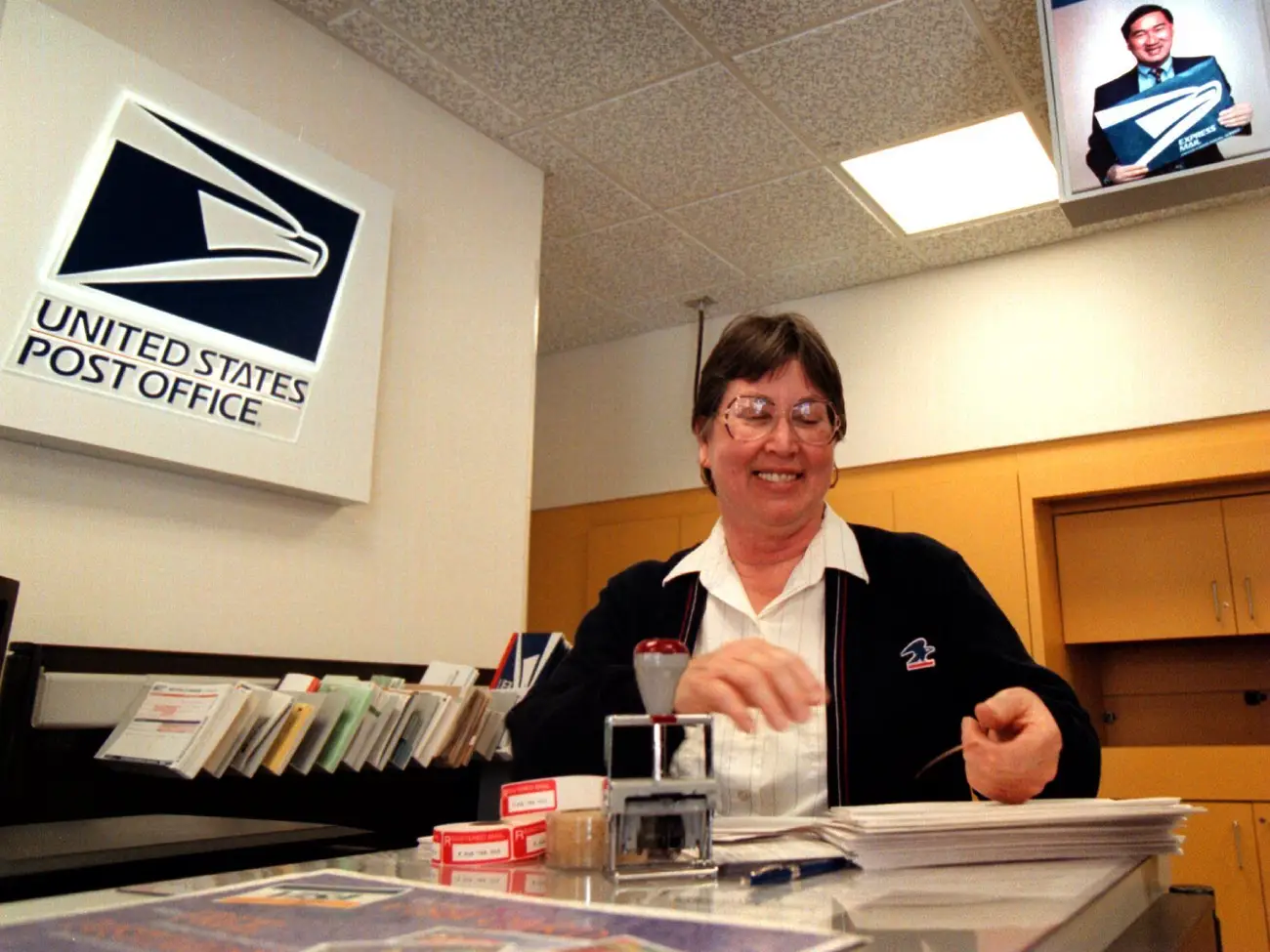
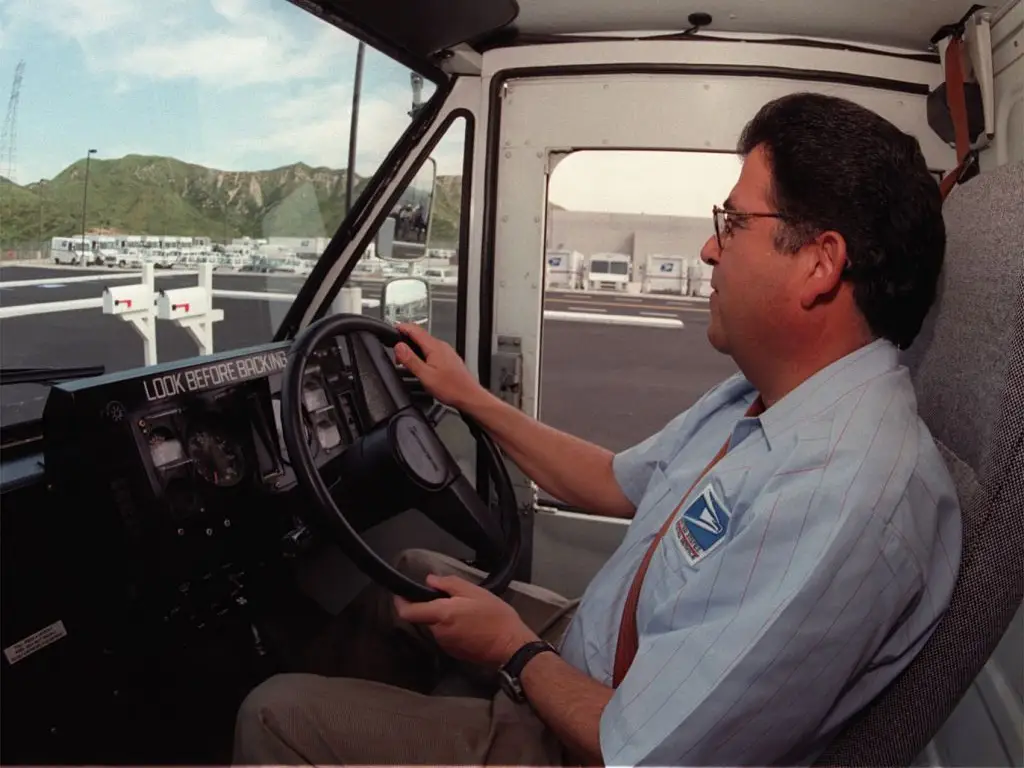

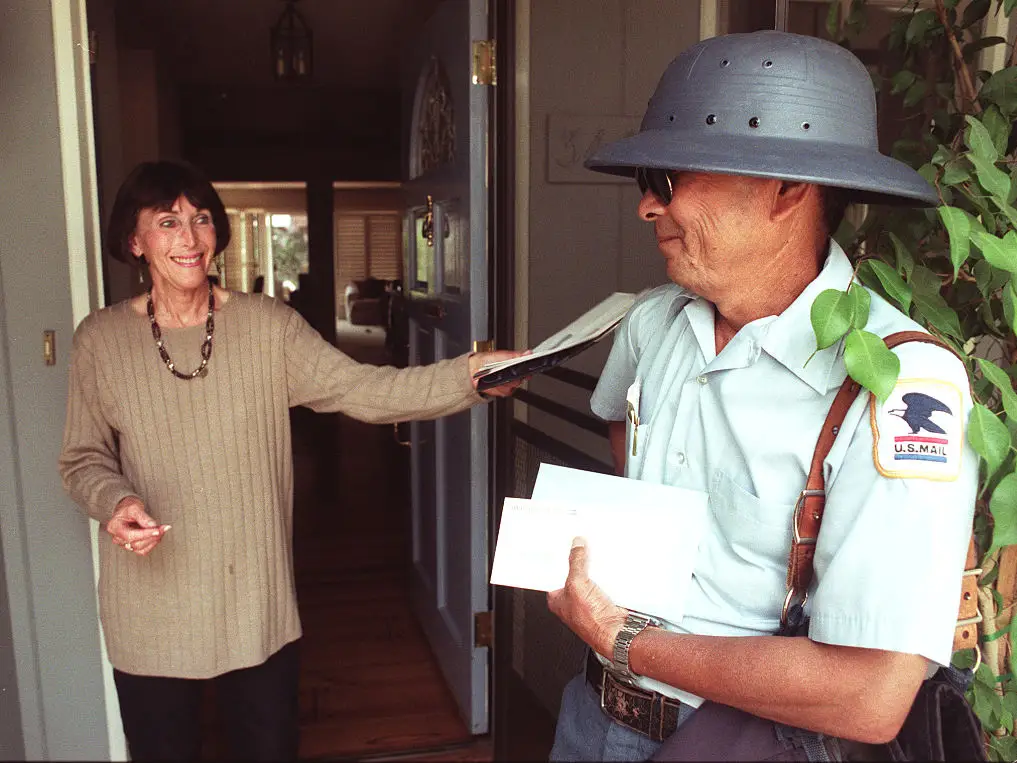
Video
Watch the video to explore the rise and fall of the USPS! Don’t miss this in-depth look at the history and challenges of the United States Postal Service.
Conclusion: The Enduring Legacy of Postal Workers
From the first horse-drawn carriages to the modern-day delivery trucks, postal workers have consistently adapted to the needs of the times. The photographs chronicling their work not only highlight the tools and uniforms of the trade but also the unwavering dedication of postal workers to serve their communities. As technology continues to evolve, the role of postal workers will continue to transform. However, one thing remains constant: the postal service’s commitment to delivering the mail, no matter the challenges that arise.
In exploring these rare and vintage images, we gain a deeper appreciation for the history of postal workers and the vital role they have played in connecting communities, both near and far, across the world.



